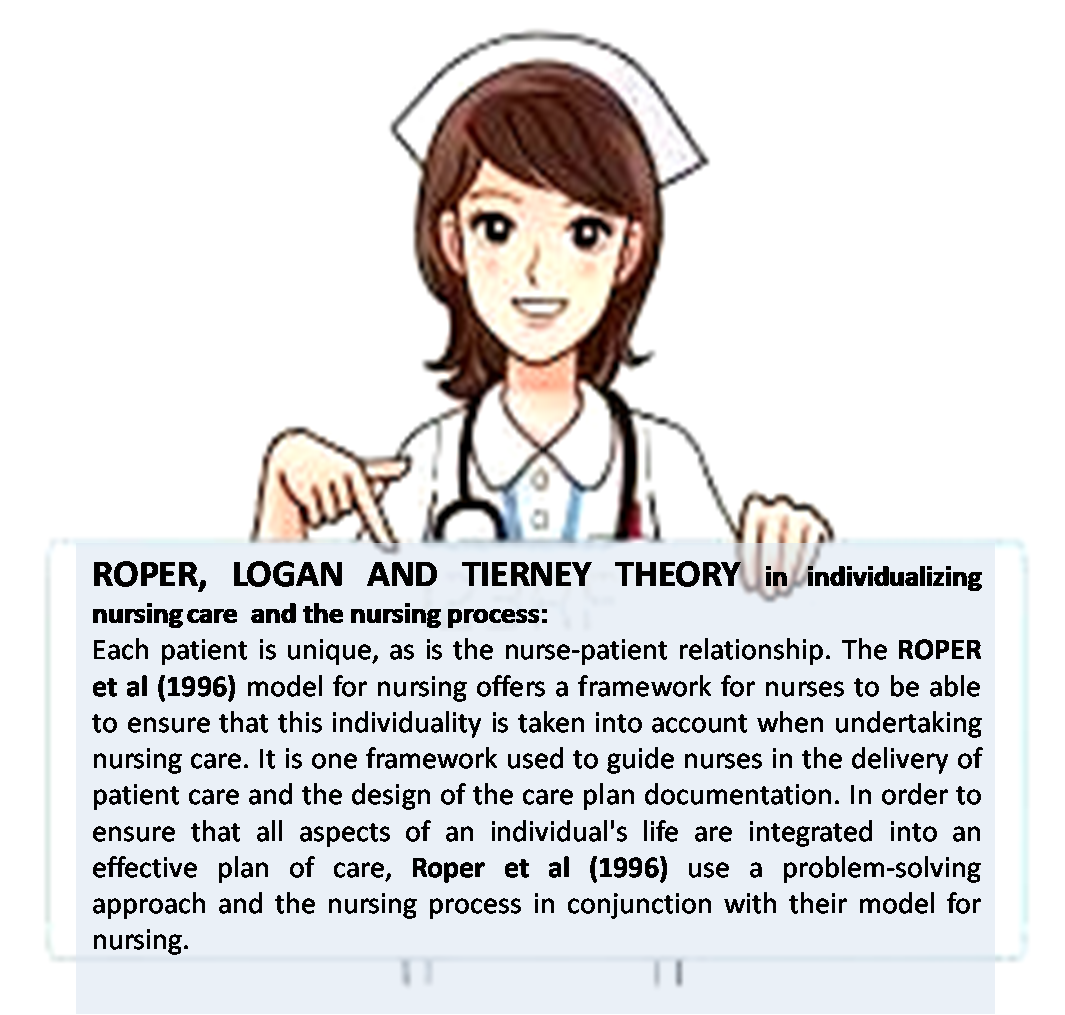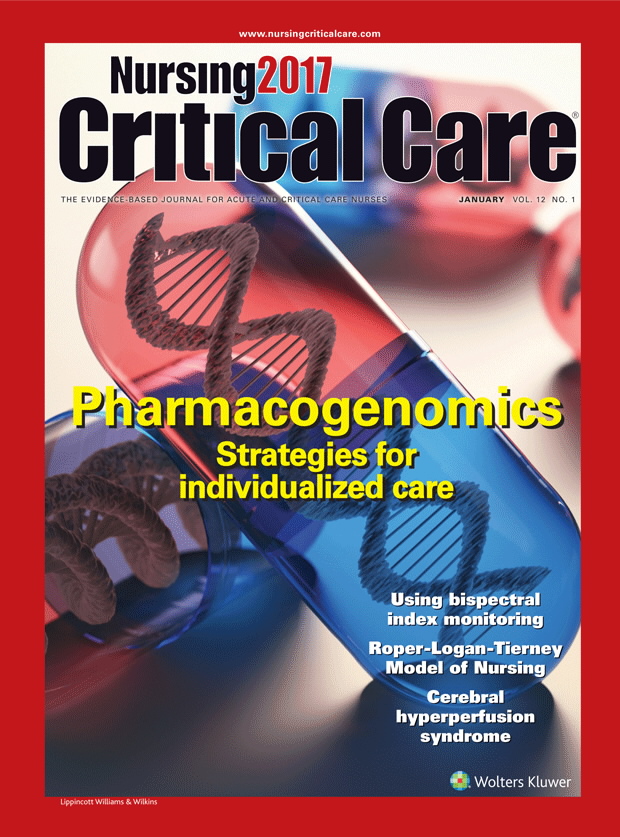
(PDF) Using the RoperLoganTierney model in neonatal transport
The Roper-Logan-Tierney (1996) model of nursing as a tool for professional development in education Nurse Educ Pract. 2004 Sep;4 (3):159-67. doi: 10.1016/S1471-5953 (03)00074-X. Authors Fiona Timmins 1 , Joan O'Shea Affiliation

RoperLoganTierney Theory September 2014
The R-L-T Model's origins, its framework, and framework are introduced, which are useful in both academic and clinical settings. Abstract:Well known throughout the United Kingdom and translated into multiple languages, the Roper-Logan-Tierney (R-L-T) Model of Nursing is a practice-centered theoretical model useful in both academic and clinical settings.

[PDF] Activities of living of disabled people according to the RoperLoganTierney model of
In this chapter and the next, the Roper-Logan-Tierney model of nursing is described in detail, including the original development, the key concepts of its philosophy, the five components of the model, the extent to which it reflects a theoretical base, and the way in which it may be put into practice within the framework of the nursing process.

💌 Roper logan and tierney nursing model. Developing a plan of care using the Roper, Logan and
This book provides the definitive account of the Roper-Logan-Tierney model of nursing, including in-depth discussion of its conceptual development, its place within the wider body of nursing theory and a critique of its application in practice. The book will conclude with a wider discussion of the place of this model for nursing in the face of.

🌱 The nursing process roper logan tierney. Roper, Logan and Tierney’s Activities of Living Model
Roper-Logan-Tierney Model of Nursing Based on Activities of Living Contributor: Jacquelyn Fawcett October 10, 2020 Authors - Nancy Roper, RN, MPhil; Winifred Logan, RN, MS; and Alison J. Tierney, RN, PhD First published - 2000 Typology Conceptual model of nursing Major Concepts and Brief Description

RoperLoganTierney Theory
Well known throughout the United Kingdom and translated into multiple languages, the Roper-Logan-Tierney (R-L-T) Model of Nursing is a practice-centered theoretical model useful in both academic and clinical settings. This article introduces the R-L-T Model's origins, its framework, and select applications to nursing. Figure

The Roper Logan Tierney Model Nursing Essay
The Roper-Logan-Tierney model of nursing: a framework to complement the nursing process Nursing. 2015 Mar;45(3):24-6. doi: 10.1097/01.NURSE.0000460730.79859.d4. Author Bridgette C Williams 1 Affiliation 1 Bridgette C. Williams, a nursing.

Roper Logan and Tierney's Model
The Roper-Logan-Tierney Model for Nursing is a theory of nursing care based on activities of daily living, which are often abbreviated ADLs or ALs. The model is widespread in the United Kingdom, especially in the public sector. The model is named after its developers: Nancy Roper, Winifred W. Logan, and Alison J. Tierney.

RoperLoganTierney Model of Nursing Based on Activities of Living Nursology
The Roper-Logan-Tierney Model of Nursing, 1st Edition Based on Activities of Living Authors : Nancy Roper & Winifred W. Logan & Alison J. Tierney Date of Publication: 09/2000

😊 Roper logan tierney. Roper Logan and Tierney Care Planning Essay. 20190206
New edition of a successful textbook which demonstrates the theory and practice of one of the most popular models of nursing. Karen Holland, Jane Jenkins and their colleagues carefully explain and explore how the Roper-Logan-Tierney Model can help today's student learn how to care for patients in a variety of health care contexts and use it as a framework for their nursing practice. Rich.

😍 Roper logan and tierney 12 activities of daily living model. Developing a plan of care using
27 P. Aggleton et al., Nursing Models and the Nursing Process Peter Aggleton and Helen Chalmers 1986 Key Components of Care The Nature of People According to Roper, Logan and Tierney's model of nursing, one of the best ways to understand people is in terms of the activities they perform.

Elaboration of Roper Logan & Tierney's model of reflection
The Roper, Logan and Tierney model of nursing (originally published in 1980, and subsequently revised in 1985, 1990, 1998 and the latest edition in 2000) is a model of nursing care based on activities of living (ALs). It is extremely prevalent in the United Kingdom, particularly in the public sector. [1]

🌈 Roper logan and tierney model of nursing assessment. The Roper. 20221107
This book provides the definitive account of the Roper-Logan-Tierney model of nursing, including in-depth discussion of its conceptual development, its place within the wider body of nursing theory and a critique of its application in practice. The book will conclude with a wider discussion of the place of this model for nursing in the face of ongoing challenges in both nursing and health care.
RoperLoganTierney Theory Roper Logan & Tierney Theory
The first nursing model in the UK was produced by Roper, Logan and Tierney, first published in 1980 in The Elements of Nursing. Despite interest in this model, the British nursing profession at large did not warm to the notion of models and theories and as the 1980s gave way to the 1990s the criticisms became more vociferous and more polarised.

Elaboration of Roper Logan & Tierney's model of reflection
Policies and ethics. Nancy Roper trained as a nurse at the General Infirmary, Leeds. She spent 15 years as Principal Tutor at the Cumberland Infirmary School of Nursing. In 1964 she became self-employed as a writer. In 1975 she was awarded an MPhil based on her research from.

LifeWork Balance A RoperLoganTierney Model of Nursing Perspective Nursology
The Roper Logan model was named after the author of the model, Nancy Roper, Logan and Tierney. It was first developed in 1980 based upon the work by Nancy Roper in 1976. The model is based on the 12 activities of living in order to live. The purpose of the Roper Logan theory is as an assessment used throughout the patient's care.